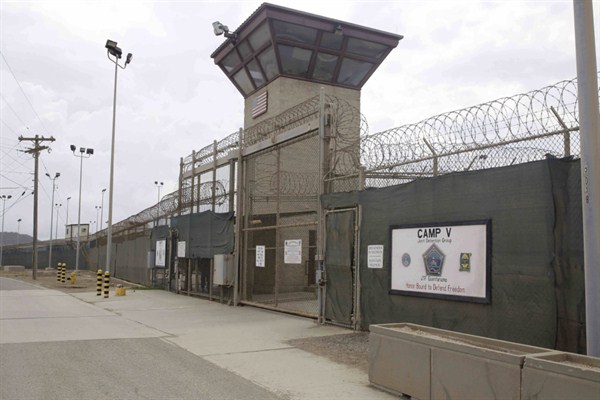When the United States invaded Iraq in 2003, there were 680 prisoners being held in the detention facility at Guantanamo Bay. Today, there are 122. As The Associated Press has reported, that is “less than half the number when [U.S. President Barack] Obama took office, and the fewest since 10 days after the U.S. began shipping al-Qaida and Taliban fighters, shackled and clad in orange jumpsuits, to the base on Jan. 11, 2002.”
A slow trickle of prisoner releases has steadily picked up over the last year and a half, and especially in recent months, as part of a policy shift by the Obama administration. As Cliff Sloan, the State Department’s outgoing special envoy for closing Guantanamo, wrote in a New York Times op-ed in early January, “Over the past 18 months, we moved 39 people out of there, and more transfers are coming.” Later that month, five more detainees, all Yemenis, were transferred out of Guantanamo—four were sent to Oman and one, who was picked up by Pakistani authorities in 2002 when he was 17 and held for over 12 years in Guantanamo without charges, was sent to Estonia.
Last April, Ken Gude, a senior fellow at the Center for American Progress, explained in World Politics Review why, after years of unfulfilled pledges, finally closing Guantanamo was actually in Obama’s reach:
Keep reading for free
Already a subscriber? Log in here .
Get instant access to the rest of this article by creating a free account below. You'll also get access to three articles of your choice each month and our free newsletter:
Subscribe for an All-Access subscription to World Politics Review
- Immediate and instant access to the full searchable library of tens of thousands of articles.
- Daily articles with original analysis, written by leading topic experts, delivered to you every weekday.
- The Daily Review email, with our take on the day’s most important news, the latest WPR analysis, what’s on our radar, and more.

